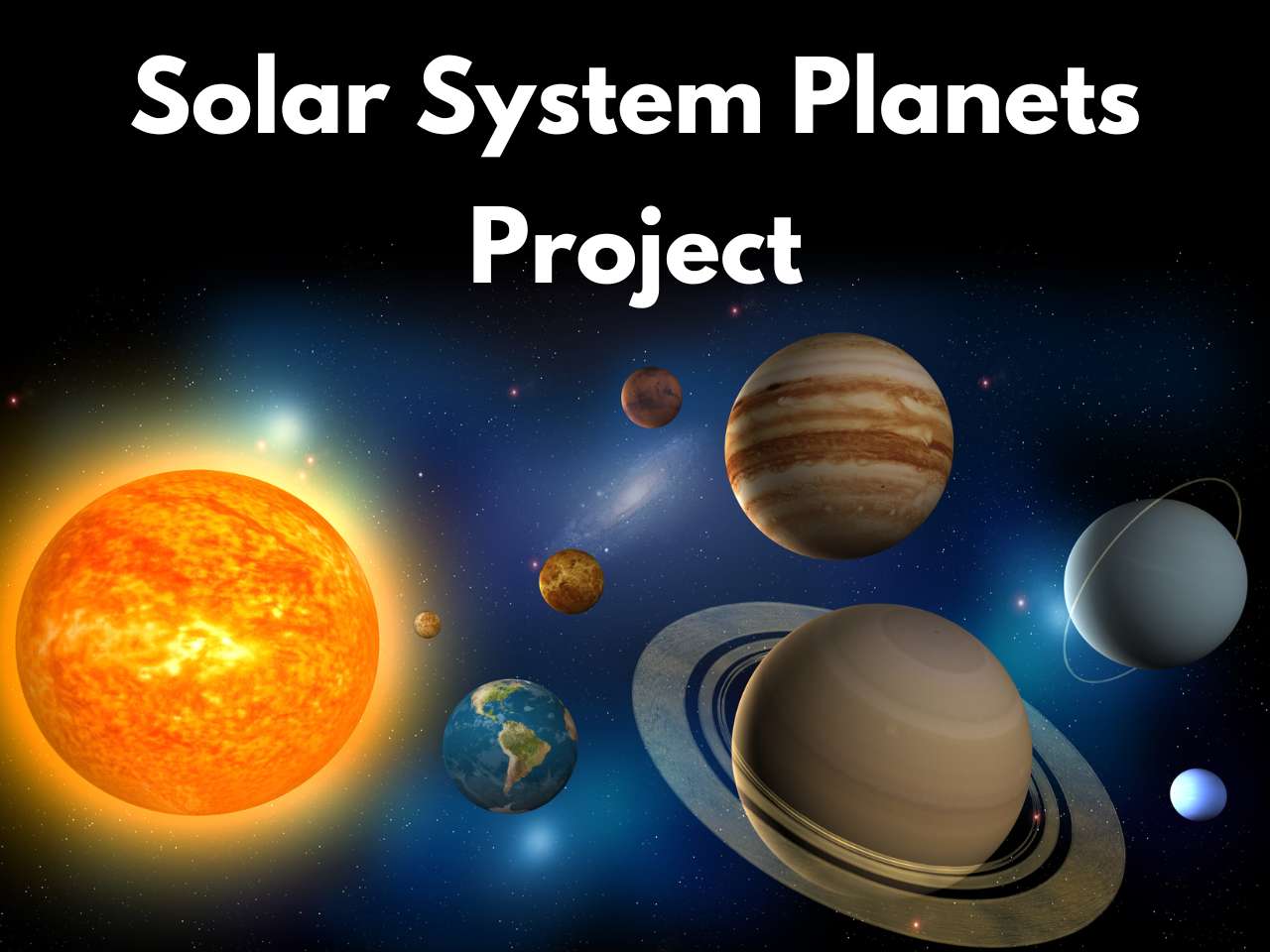Best Solar System Planets Project for Science Exhibitions 2025
Solar System Planets Project: Are you ready to take an adventurous journey through the cosmos? Let’s create a explore planets of the solar system. If you are looking for the “Planets of the Solar System project” you are in the right place. Creating a solar system planets project is not just an activity, it’s a cosmic adventure. Let’s explore the vast space, the beauty of the planets and it’s orbits, and the mysteries that still exist about these celestial bodies which make planets in sthe olar system project an interesting topic.
No matter if you are a student, a teacher, a parent or a space enthusiast, this article will help you make a unique planets of the solar system project ideas. Let’s dive into a creative approach to make an extraordinary solar system project planets model. This guide includes ideas, materials to use, fun facts, points to ponder for your planets project.
Understanding the Solar System Planets Project
Before diving into the process, let’s understand what the planets of the solar system project represents. The majestic solar system consists of the Sun, eight planets, dwarf planets, asteroid belts and comets.
Let’s take a look at the eight planets in order:
Mercury: It has extreme temperatures and is the closest to the sun.
Venus: It has a thick, toxic atmosphere and the hottest surface temperatures.
Earth: Our home.
Mars: Called as the Red Planet which has a dusty landscape.
Jupiter: The largest planet.
Saturn: Has a stunning ring system.
Uranus: Has a bluish color due to methane.
Neptune: The farthest planet, known for its storms and deep blue colour.
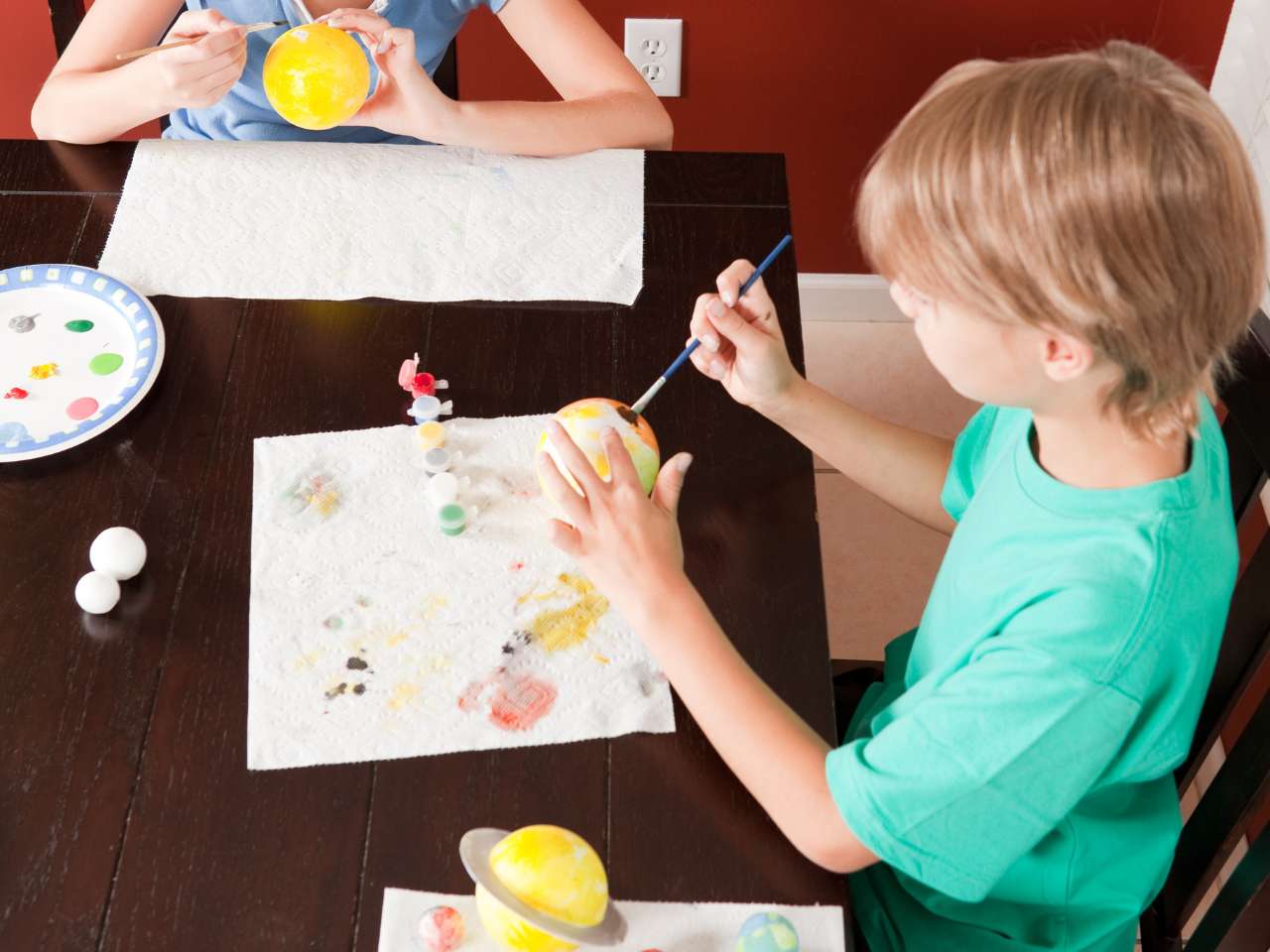
Planning our Solar System Project
Your planets in solar system project can be of any one of the various forms as below:
3D Model: A hands-on approach using clay, foam balls, etc.,.
Digital Presentation: A PowerPoint, video, or animation-based.
Augmented Reality: Using AR apps to make your solar system project planets come to life.
Glow-in-the-Dark Model: A unique way to display solar system project planets in the dark.
Hanging Model: A suspended model that shows planets orbiting the Sun.
How to build a 3D model of the Solar System Planets Project
One of the most popular ways to make a planet of the solar system project is by creating a physical model.
Materials required
-
Foam balls (various sizes for various planets)
-
Paints and brushes
-
Sticks and Glue gun for mounting
-
Black cardboard background
-
LED lights
-
Papers or carboard Labels for each planet
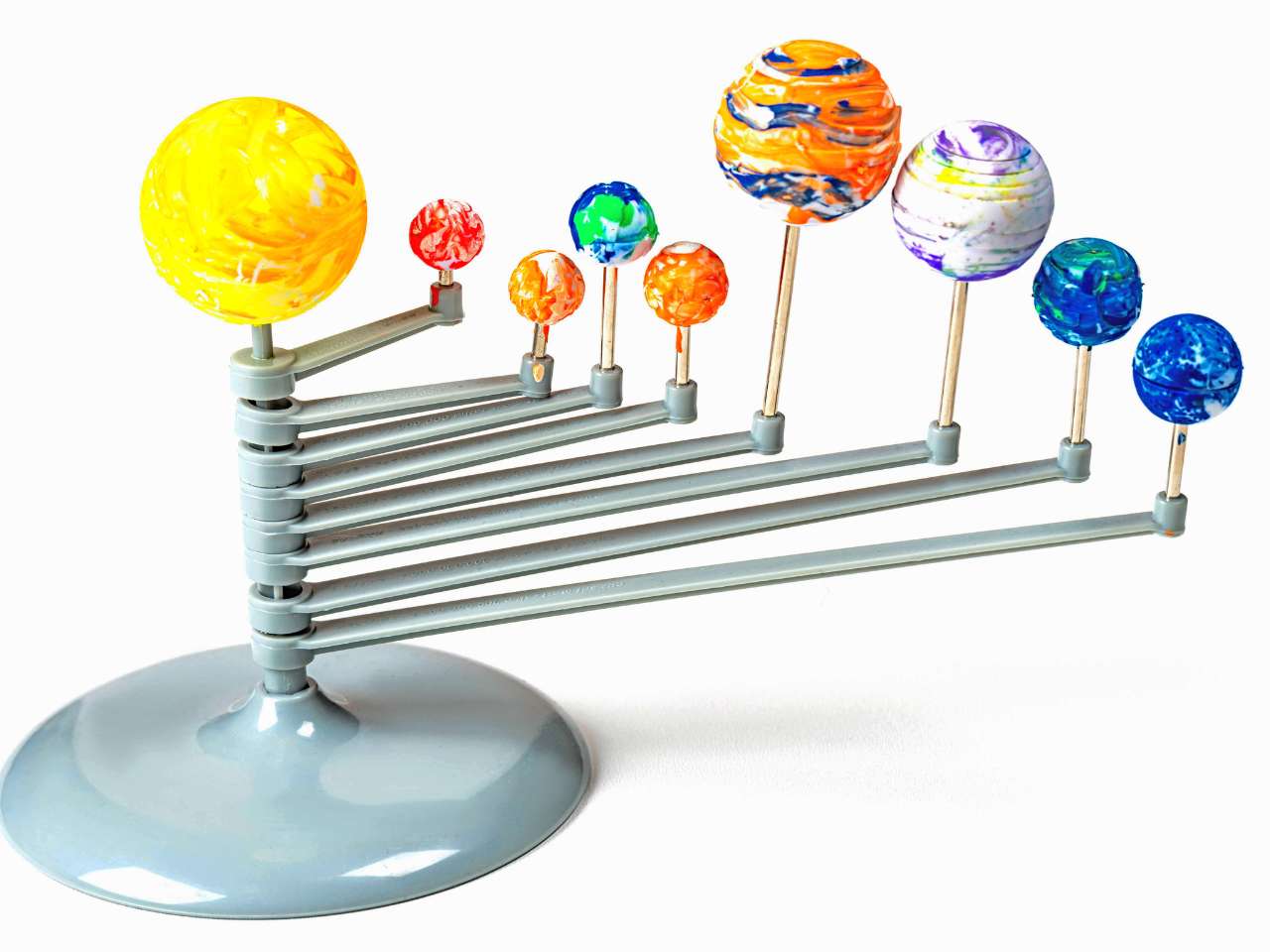
Steps to Create Your Model
-
Prepare the Base: Use a board or a cardboard box to act as your space base.
-
Paint the balls similar to planets: Paint planets like how it looks by taking reference from stock photos.
-
Assemble the Solar System: Attach the planets in their correct positions using sticks or wires using glue guns.
-
Add Labels: Keep labels for each planet and add an interesting fact about that planet.
-
Enhance with Effects: Glow-in-the-dark paint can create an immersive space experience.
How to build a hanging model: A Floating Solar System Model
Want a fun and cool suspended planets in the solar system project that makes it look like the planets are orbiting the sun? Then a hanging model is the perfect choice!
Gather Your Materials: You’ll need
-
Foam balls (the planets)
-
Acrylic paint & brushes
-
Wire or thread
-
A sturdy ring (an embroidery hoop works great)
-
A small LED light for the sun
-
Glue or tape
Paint Your Planets
Paint planets like how it looks by taking reference from stock photos. Features such as the Great Red Spot on Jupiter, the rings of Saturn, and the blue waters of Earth can be included in the painting. Once it is dried, proceed with the next step.
Attach Strings
Cut strings/threads of varying lengths to match the distance of each planet from the sun. Cut a small hole at the center of each foam ball to tie the string tightly.
Create the Sun as the Central Element
Position the largest foam ball as the Sun which should be in the center of your mobile. A small LED light can be used to make it shine.
Create the Planets and Their Movement Around the Sun
Join each planet to the Sun in the correct order to make them float around it.
Hang It somewhere and Watch It Move!
A strong hook or a ceiling fan on the lowest speed can provide the necessary movement. We can also join a small motor to achieve the slow planetary movement.
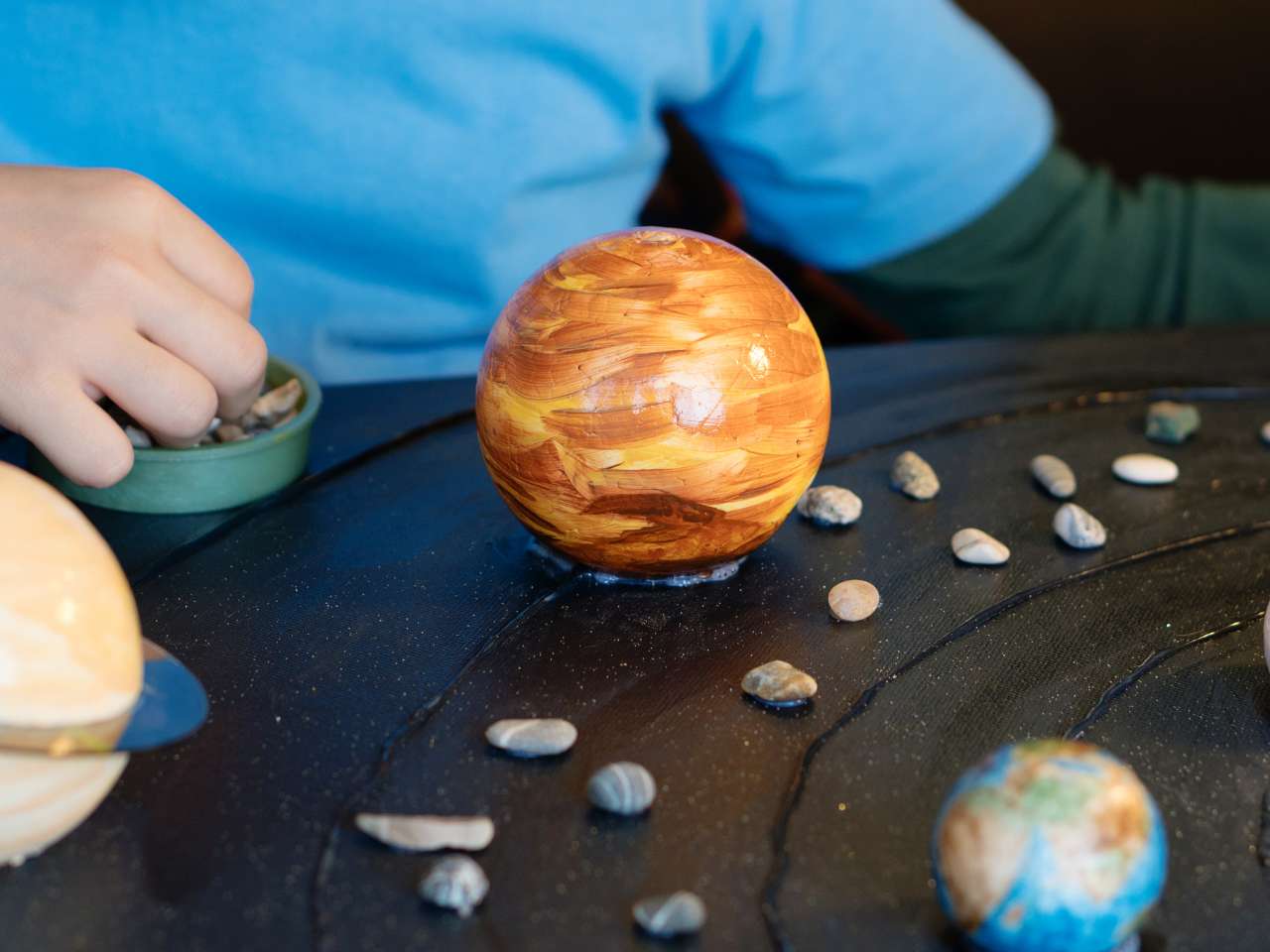
Using AR Apps – Make Your Solar System Project Planets Come to Life
Creating an Augmented Reality (AR) solar system planets project makes your model interactive and immersive. Here’s how you can do it:
1. Choose an AR App or Software to create interactive 3D planets like JigSpace, solar System Scope, Adobe Aero
2. Download or create 3D planet models using Sketchfab or Thingiverse (Free planet models to download) or create your own using Blender or Tinkercad
3. Upload Models to AR App (JigSpace or Adobe Aero)
4. Print QR Codes for each planet to display the 3D views and place these QR codes next to each planet in your project.
5. Add animations like planetary rotation or fun facts popping up when clicked and view 3D planets through a phone or tablet.
6. Test Your AR Planets of Solar system project, check if planets appear in the correct order and ensure the QR codes lead to the right content.
Fun facts about our solar system planets project
-
Jupiter is very huge that it could fit all other planets inside.
-
A day on Venus is much longer that its year.
-
The rings of Saturn are made up of dust, ice, and rock particles.
-
Neptune’s winds can reach speeds of over 1,200 mph and are the fastest in the solar system
-
The first planet to be discovered using a telescope was Uranus.
-
The sun is super super big. It makes 99.8% of the mass of the entire solar system.
-
The moon is drifting about 4cm away from the Earth every year.
-
In Uranus, for 42 years one side is in constant sunlight and the other side in total darkness.
-
Venus is hotter than Mercury and it is the most toxic planet
-
Pluto has a giant heart-shaped glacier on its surface called the “Tombaugh Regio”
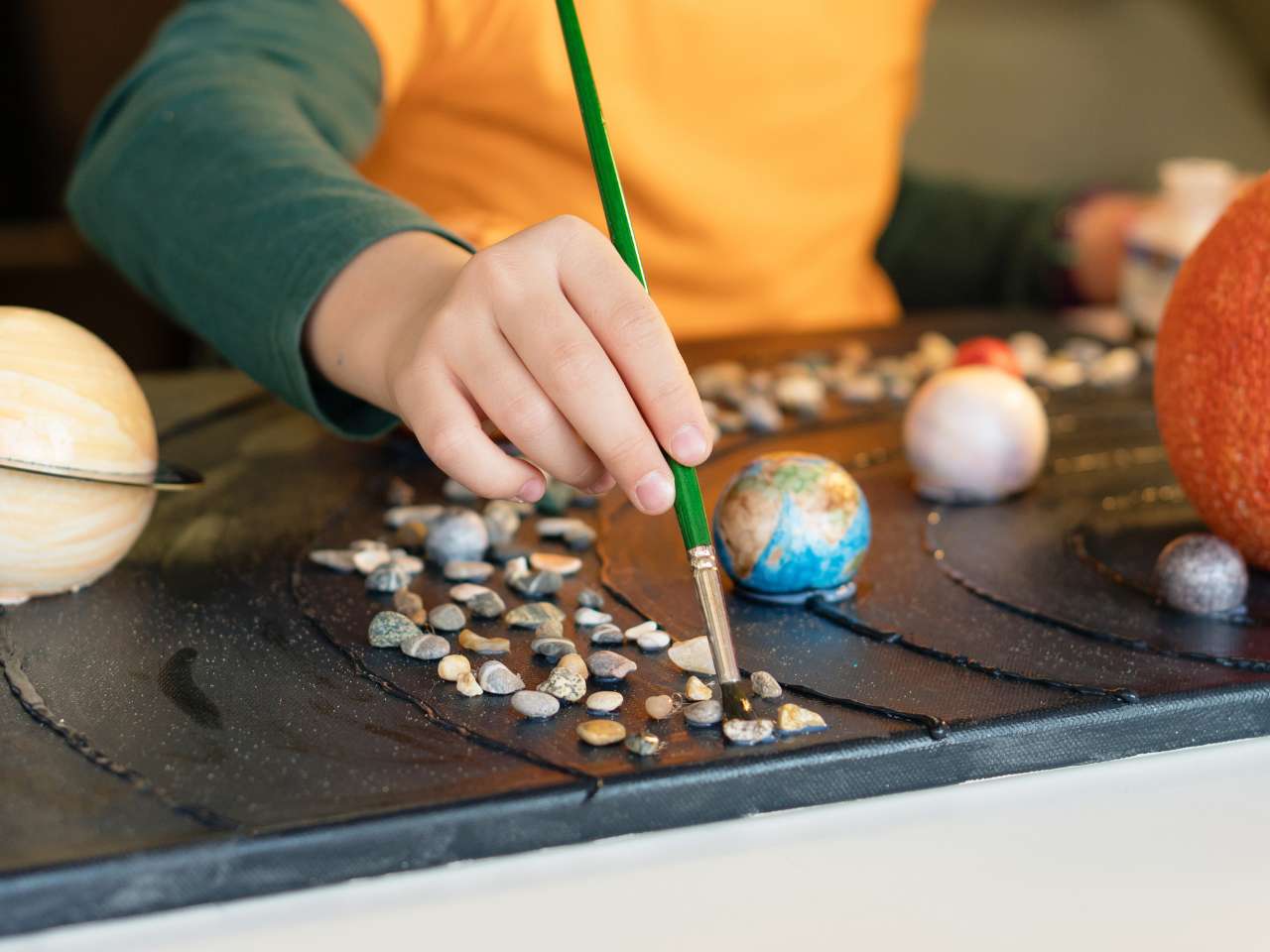
Adding these facts to your planets of the solar system project will give it an extra score from the teacher.
Your Planets in the Solar System project is a portal to understanding the universe. By using creativity, technology, and fun facts, your solar system project planets can be a masterpiece that educates and inspires.
Whether for a school assignment or personal curiosity, your Planets of the Solar System project will surely be a stellar success!
Have you heard about big bang theory?? Come on let’s explore it.
Imagine you are attending a birthday party, the biggest ever! It’s the universe’s birthday! Very long ago, the universe very small, smaller that a grain of sand or even smaller than a dust particle. Not just small, it was also very hot and packed with lots and lots of energy. The best analogy would be a balloon that has air that is compressed but not yet inflated
Now, imagine that this big balloon explodes. It exploded super-fast, and it grew in all possible directions. This is what happened during Big Bang.
At first, everything was too hot, but as the universe started to cool down, little pieces started to stick together to form atoms. Over the years, they have become the stars, planets, and other cosmic elements that are now present.
Are we the only one in the Galaxy?
Absolutely no. The solar system seems to be very huge, but, there are billions and trillions of solar systems and galaxies out there! A solar system is just a star and a group of orbiting planets. Scientists have found thousands of Solar systems similar to ours!
Scientists are searching for a planet like our Earth which supports life on it. Maybe there is another universe with another galaxy that has a planet and kids wondering about other universes just like you and me!
Galaxies:
If we consider planets as our houses, the solar system is our neighborhood and the galaxy is the entire city filled with stars, planets, and voids. Our galaxy is the Milky Way galaxy on which our solar system is located.
Some of the other galaxies that have been found by the scientists are as follows:
-
Andromeda galaxy
-
Whirlpool Galaxy
-
Sombrero galaxy
And who knows? Maybe somewhere out there, on a planet in another galaxy, someone is looking up at the stars, wondering if we exist too
